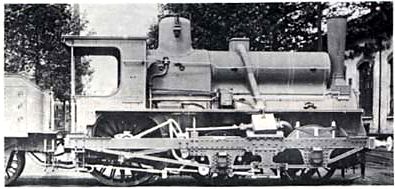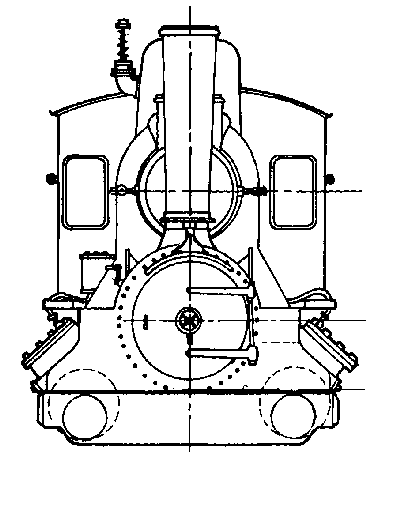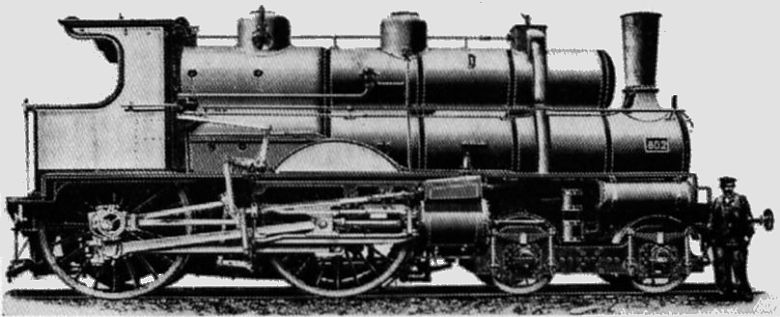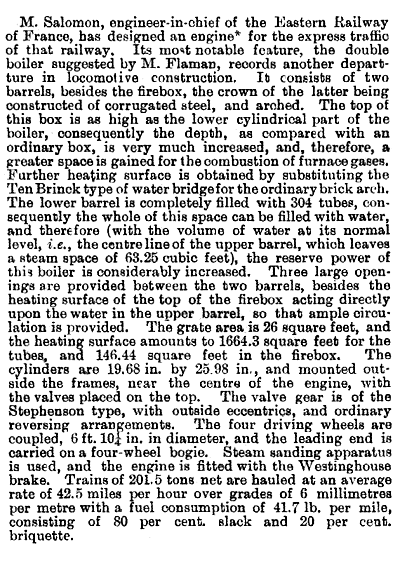Gallery opened: June 2003
Updated: 17 Jan 2006




The Flaman Boiler Gallery |
Gallery opened: June 2003 |
The Flaman boiler was a means of getting more boiler evaporating surface into a given loading gauge. Engine development had reached the point where boiler diameter, and hence evaporation rate, was limited by the distance between the driving wheels.
A normal boiler combines the two functions of evaporation and storage of steam above the water level. The solution of Flaman, an engineer of the French Est railway, was to separate the two functions and fit two cylindrical structures, one above the other. The lower was the boiler proper, and in normal operation was completely filled with water and fire-tubes. The other cylinder was a steam reservoir communicating with the boiler through several large vertical tubes.
See The Thuile Locomotive for a similiar approach- a single boiler barrel is used but it is of figure-of-eight cross-section.
The Flaman boiler should not be confused with The Brotan Boiler which looked similiar externally but had a water-tube firebox.
 | Left: No 604: The first Flaman boiler on the L'Est network.
Unofficially it appears to have been called "the camel". |
The "Belgique" above is a 4-2-0 Crampton locomotive- ie it has only one driving axle, positioned at the extreme rear. The configuration was popular in France and Belgium, but I have never understood why. It looks as though the proportion of loco weight available for adhesion would be small.

 | Above: Side elevation of No 604.
Left: Front elevation of No 604.
|
The experiment was declared to be successful and the principle applied to a series of 4-4-0 locomotives that ran on the Est for some fifty years.
 | Left: A Flaman-boiler 4-4-0 tender locomotive of the Est line in France
|
So far it appears that the Flaman boiler was only applied in quantity to this type of locomotive, as pictured above. The lower boiler barrel contained no less than 323 tubes of 1.5 in diameter.
It was intended to haul 250-ton trains of 20 coaches from Paris to the St Gotthard pass, while maintaining not less than 46 mph. It accomplished this easily, and showed itself capable of handling heavy trains up to 600 tons on a 1 in 16 gradient, although at a somewhat lower speed of 12.5 mph.
However, other countries seemed to be able to design sufficiently powerful locomotives without the extra complication, and these locos all disappeared eventually. (though it took a long time)
 | Left: A Flaman-boilered 4-4-0 locomotive at work on the Est network
|
 | Left: From the British journal Engineering, 1895.
|

  
|